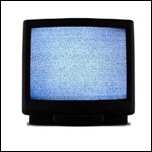 At around 9.00am (EST) today, analogue television transmissions in the Regional Queensland aggregated market will be switched off.
At around 9.00am (EST) today, analogue television transmissions in the Regional Queensland aggregated market will be switched off.
The switch-off will affect local transmissions for ABC, Seven Queensland (STQ), WIN (RTQ), Southern Cross Ten (TNQ) and SBS in the markets of Cairns/Far North Queensland, Townsville, Mackay, Rockhampton, Maryborough/Wide Bay and Toowoomba/Darling Downs/Southern Downs – covering a total market population of around 1,764,000 viewers, making it the largest analogue shutdown in Australia to date.
According to the latest Digital Tracker survey, covering the period July to September 2011, around 85 per cent of households in the Regional Queensland market have converted at least their main TV set to digital. While retailers have experienced the expected last minute rush for digital set top boxes and TVs, it is estimated that two per cent of viewers in the affected market may still be unaware of the switch to digital-only transmission.
Today’s switch-off will mark the end of almost fifty years of analogue television transmission in regional Queensland. The first regional channel to sign-on was DDQ10 Darling Downs (Toowoomba) in July 1962, followed later in the year by TNQ7 in Townsville.
 RTQ7 Rockhampton followed in 1963, then WBQ8 Maryborough/Wide Bay (1965), FNQ10 Cairns (1966), SDQ4 Southern Downs (1966), MVQ6 Mackay (1968) and ITQ8 Mount Isa (1971).
RTQ7 Rockhampton followed in 1963, then WBQ8 Maryborough/Wide Bay (1965), FNQ10 Cairns (1966), SDQ4 Southern Downs (1966), MVQ6 Mackay (1968) and ITQ8 Mount Isa (1971).
ABC began rolling out television services in regional Queensland with the launch of ABRQ3 Rockhampton and ABDQ3 Darling Downs in December 1963.
 In 1986 the ABC began broadcasting radio and television services to remote and outback regions via the new domestic satellite AUSSAT. This was joined by commercial station QSTV, operated by Telecasters North Queensland (TNQ7/FNQ10), in 1988.
In 1986 the ABC began broadcasting radio and television services to remote and outback regions via the new domestic satellite AUSSAT. This was joined by commercial station QSTV, operated by Telecasters North Queensland (TNQ7/FNQ10), in 1988.
Also in 1988, the Toowoomba channel DDQ10 changed its call-sign and frequency to DDQ0 to allow Brisbane channel TVQ0 to change to the Ten frequency.
 Aggregation of the regional markets of Townsville/Cairns, Rockhampton/Darling Downs/Southern Downs and Wide Bay/Mackay took place on 31 December 1990, giving local viewers a choice of three commercial channels – Sunshine Television (now Seven Queensland), WIN and QTV (now Southern Cross Ten).
Aggregation of the regional markets of Townsville/Cairns, Rockhampton/Darling Downs/Southern Downs and Wide Bay/Mackay took place on 31 December 1990, giving local viewers a choice of three commercial channels – Sunshine Television (now Seven Queensland), WIN and QTV (now Southern Cross Ten).
In 1999, Alice Springs-based Imparja Television expanded its remote area service to Mount Isa and the remote Queensland market in competition with Seven Central (previously ITQ8 and QSTV, now Southern Cross Television). The region is now also covered by Ten Central, a joint venture between Imparja and Southern Cross as a digital-only service providing a dedicated Network Ten schedule.
 Viewers in the remote market covered by analogue terrestrial transmissions of Imparja and Southern Cross Television will still have access to analogue until 2013. Today’s switch-off only affects the regional Queensland aggregated market. Brisbane and the Gold Coast will continue to receive analogue television until 2013.
Viewers in the remote market covered by analogue terrestrial transmissions of Imparja and Southern Cross Television will still have access to analogue until 2013. Today’s switch-off only affects the regional Queensland aggregated market. Brisbane and the Gold Coast will continue to receive analogue television until 2013.
The Federal Government has made allowances for financial assistance to eligible households in converting either to digital television or, where digital television reception is not possible, to gain access to the satellite-based VAST system.
Viewers in locations where locally-based “self-help” transmission facilities are not being upgraded to digital may also need to convert to VAST.
 For details on the digital conversion, assistance options or access to VAST, refer to the Digital Ready website or telephone 1800 20 10 13.
For details on the digital conversion, assistance options or access to VAST, refer to the Digital Ready website or telephone 1800 20 10 13.
After the Regional Queensland market the next region to lose analogue transmissions will be Southern NSW and the ACT in June 2012.








